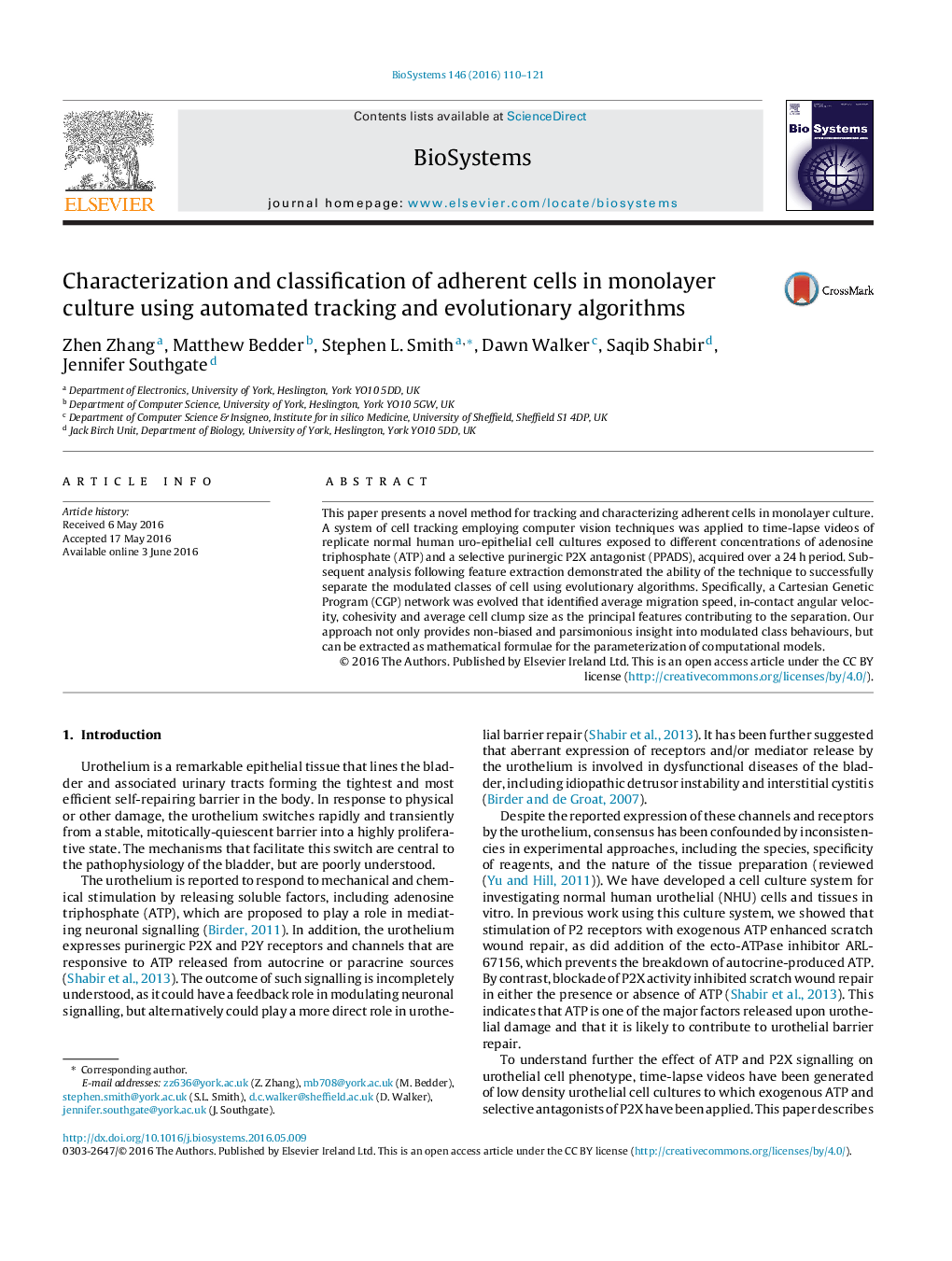| Article ID | Journal | Published Year | Pages | File Type |
|---|---|---|---|---|
| 5520749 | Biosystems | 2016 | 12 Pages |
This paper presents a novel method for tracking and characterizing adherent cells in monolayer culture. A system of cell tracking employing computer vision techniques was applied to time-lapse videos of replicate normal human uro-epithelial cell cultures exposed to different concentrations of adenosine triphosphate (ATP) and a selective purinergic P2X antagonist (PPADS), acquired over a 24Â h period. Subsequent analysis following feature extraction demonstrated the ability of the technique to successfully separate the modulated classes of cell using evolutionary algorithms. Specifically, a Cartesian Genetic Program (CGP) network was evolved that identified average migration speed, in-contact angular velocity, cohesivity and average cell clump size as the principal features contributing to the separation. Our approach not only provides non-biased and parsimonious insight into modulated class behaviours, but can be extracted as mathematical formulae for the parameterization of computational models.
